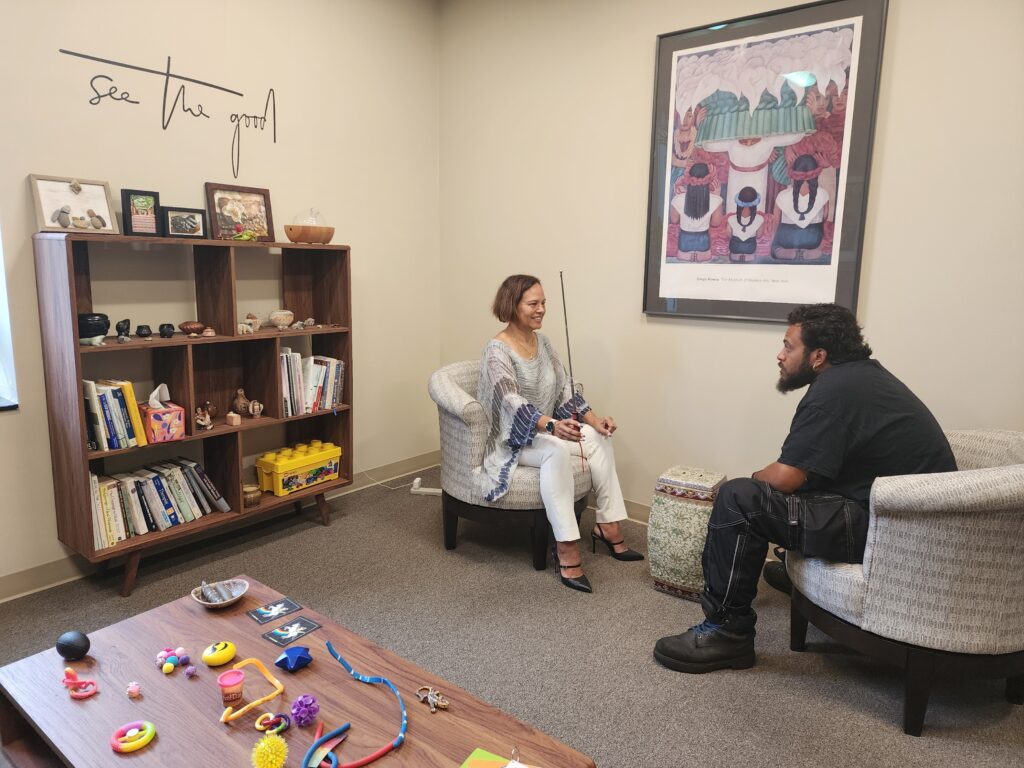Brainspotting
How does Brainspotting work?
Brainspotting was developed by David Grand, Ph.D. Dr. Grand states that “The motto of Brainspotting is, ‘Where you look affects how you feel.’
If something is bothering you, how you feel about it will literally change depending on whether you look off to your right or to your left. Our eyes and brains are intricately woven together, and vision is the primary way that we, as humans, orient ourselves to our environment. Signals sent from our eyes are deeply processed in the brain. The brain then reflexively and intuitively redirects where we look, moment to moment. The brain is an incredible processing machine that digests and organizes everything that we experience. But trauma can overwhelm the brain’s processing capacity, leaving behind pieces of trauma, frozen in an unprocessed state.”
“There is a wisdom in trauma–when we realize that our traumatic responses and imprints are not ourselves, and that we can work them through, and thus become our true selves.”
- Gabor Maté
PTSD/TRAUMA THERAPY AND BRAINSPOTTING

Brainspotting is used in trauma treatment. It has also been effective in the treatment of injury, stress, attention levels, and motivation. It is a preferred method of treatment for the following:
- Chronic fatigue and chronic pain
- PTSD
- ASD
- Complex Trauma
- Developmental Trauma
- Substance abuse
- Phobias
- Sports performance issues
- Anxiety
- Attention issues (ADHD)
- Anger issues
- Impulse control issues
Brainspotting isn’t for everyone. But the positive reaction we have received from those who have tried it are amazing. Please call us for more information. Give New & Associates LLC a call today to book your next session.
“A traumatic event can change our lives in an instant. But a moment of human connection can too. And when we combine that encounter with attuned, sensory-based responses – reassuring gestures and movements, soothing sounds, and rhythmic synchrony – we can begin to repair what has been ruptured. This is the core of expressive therapies. They restore body and mind in ways that words alone cannot.” Cathy Malchiodi, PhD. From – Trauma and Expressive Arts Therapy: Brain, Body, and Imagination in the Healing Process
Trauma is a spectrum that involves the total person both in body and mind. “The brain, mind, and body exist on a continuum, wherein sensory input from the body shapes and changes the structure and function of the brain, which concurrently shapes and alters the body in all of its parts, particularly those that provided sensory input to the brain. Trauma is a continuum of variable negative life events occurring over the lifespan, including events that may be accepted as “normal” in the context of our daily experience because they are endorsed and perpetuated by our own cultural institutions. The traumatic nature of those experiences is determined by the meaning attributed to them by the individual who experiences them. Therefore, considering the brain and body in conjunction with the mind paves the way for a more holistic treatment of trauma-related disorders” Robert Scaer from The Trauma Spectrum: hidden wounds and human resiliency


